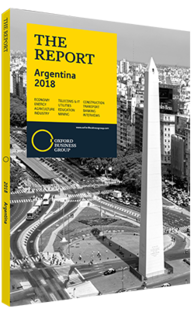Argentina's work towards a unified federal mining deal attracts new investment
A key challenge facing mining investors in Argentina involves navigating the different legislative frameworks of each province, which under the constitution, own the subsoil mineral wealth. This gives local governments significant say in the licensing, taxing and regulation of the industry. The use of open-pit mining and cyanide are banned in Chubut Province, for example, effectively making the Navidad mine one of the world’s largest underdeveloped silver quarries, despite being owned by Canada’s Pan American Silver. This situation could be about to change, however. Under President Mauricio Macri, the government has made major efforts to unify policy, culminating in the signing of the Federal Mining Agreement (Acuerdo Federal Minero, AFM) in June 2017. “It took some 12 years for the federal government to develop a working relationship between the provinces regarding mining issues,” Daniel Meilán, the former national mining undersecretary, told OBG. “Now, we are to trying to bring back a national level mining code.” While three of the country’s 23 provinces remain outside the agreement, it nonetheless represents a comprehensive sector reform.
New Deal
The Macri administration took a consultative approach to reforming the mining industry, working with the Federal Mining Council, the Federal Environmental Council, provincial governments, unions and the Argentina Chamber of Mining Companies to develop the bill. The agreement will see a 3% cap placed on royalties charged by provincial governments and allows an additional 1.5% royalty charge to be set aside for the development of infrastructure for the mining industry. The new law also standardises environmental management, public consultation processes, and local content and employment requirements across participating provinces, as well as establishing a new mining information centre to control a unified federal-level title registry. Following the passing of the AFM into law, Macri said it was time for Argentina to put an end to the lack of control and transparency in the sector.
Hold Outs
The provincial governments of Chubut, La Pampa and La Rioja refused to sign the agreement. Of these, the first is the most important to the industry because the province is home to the Suyai gold mine project and the Laguna Salada uranium project in addition to the Navidad mine. However, the arrival of Mariano Arcioni as governor of the province following the death of his staunchly anti-mining predecessor Mario das Neves in October 2017, has opened the possibility to move forward. Arcioni has said that he is open to the possibility of creating certain zones, including around Navidad, where exploration can take place.
Reception
Highlighting the importance of the AFM and the preceding work done by the current government, signatory provinces drastically improved their standing on the Fraser Institute’s “Survey of Mining Companies 2017,” which ranks jurisdictions on a scale of 0-100 in terms of their attractiveness to investment. In 2015, the last year of former President Cristina Fernández de Kirchner’s administration, a number of the provinces ranked amongst the worst places to do mining in Latin America. In the two years since, however, Catamarca has seen its score rise from 44.35 to 70.50, Salta from 62.30 to 71.89 and Neuquén from 25.43 to 74.99. In Latin America, only Chile (80.55) had a higher score than the three standout provinces. Chubut’s ranking, meanwhile, remained mostly stagnant over the period, from 25.13 to 26.34. Overall, the country saw a 65% increase in its median attractiveness.
Future Ambition
The new mining code removes an important dimension of risk when working in Argentina. Previously firms were subject to regional political decisions that were often unclear in nature and subject to sudden change. The new national framework binds most provinces to a stable regime. Between 2007 and 2015 the country attracted just $10bn in mining investment, compared to $80bn in Chile and $52bn in Peru, however, with the new rules of the industry, Argentina is now targeting $25bn of investment by 2025.
You have reached the limit of premium articles you can view for free.
Choose from the options below to purchase print or digital editions of our Reports. You can also purchase a website subscription giving you unlimited access to all of our Reports online for 12 months.
If you have already purchased this Report or have a website subscription, please login to continue.

